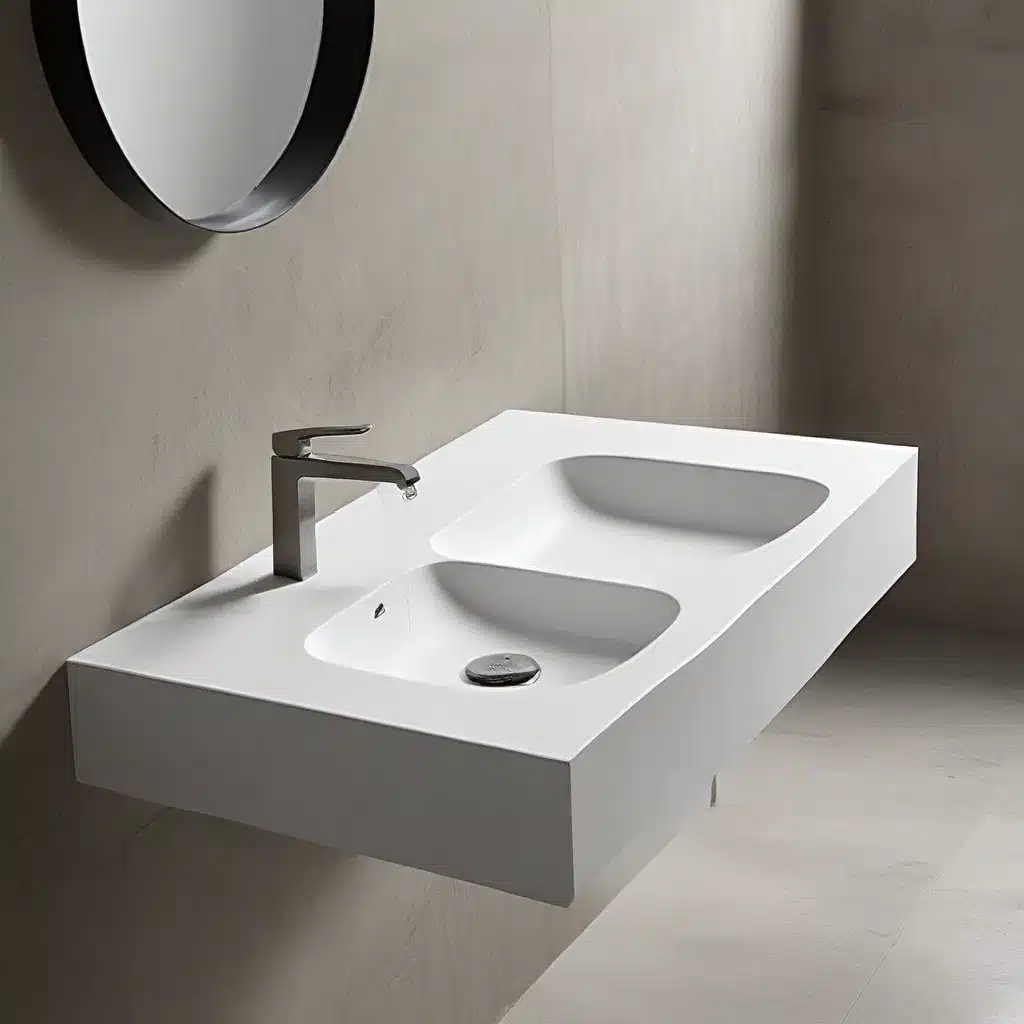
As the world becomes increasingly conscious of our environmental impact, the demand for eco-friendly bathroom solutions has never been higher. One area that has seen significant innovation is the washbasin, a crucial fixture that plays a pivotal role in our daily routines. In this comprehensive article, we’ll explore the latest washbasin designs that prioritize water conservation, helping you create a sustainable and stylish bathroom sanctuary.
Sustainable Washbasin Designs: Reducing Water Waste
At the forefront of the sustainable washbasin revolution are innovative designs that focus on water-saving features. One such example is the increasingly popular vessel sink, which sits atop the vanity rather than being recessed into it. These sinks often feature a smaller basin, limiting the amount of water needed for each use. By reducing the overall water volume, vessel sinks can significantly lower your household’s water consumption.
Another water-efficient option is the undermount sink, which is seamlessly integrated into the countertop. These sinks minimize the exposed surface area, minimizing the amount of water required to fill the basin. Furthermore, undermount sinks are easier to clean, as the smooth transition between the counter and sink eliminates hard-to-reach crevices where dirt and grime can accumulate.
For those seeking even greater water savings, the wall-mounted washbasin presents an intriguing choice. By eliminating the need for a vanity cabinet, wall-mounted sinks drastically reduce the overall water volume required. These streamlined fixtures also lend a modern, minimalist aesthetic to the bathroom, perfectly complementing contemporary design trends.
Aquatica USA emphasizes the importance of water conservation in bathroom design, noting that “Eco-friendly bathroom solutions, such as water-efficient washbasins, can make a significant impact on reducing water consumption and promoting sustainability.”
Innovative Materials for Sustainable Washbasins
Alongside innovative designs, the selection of materials used in washbasin construction plays a crucial role in achieving sustainability. One of the most promising options is porcelain, a durable and low-maintenance material that is highly resistant to stains, scratches, and chipping. Porcelain sinks not only contribute to a clean, modern aesthetic but also boast exceptional longevity, reducing the need for frequent replacements.
Another eco-friendly choice is natural stone, such as granite or marble. These timeless materials offer a touch of elegance and luxury while being highly resistant to wear and tear. By opting for natural stone, you can enjoy a long-lasting washbasin that requires minimal maintenance and contributes to a more sustainable bathroom.
For those seeking a more renewable option, solid surface materials, such as quartz or engineered stone, are gaining popularity. These synthetic composites are often made from a combination of recycled materials and natural minerals, making them an environmentally friendly choice. Solid surface washbasins are not only durable but also customizable, allowing you to tailor the design to your specific needs and preferences.
Proper Installation and Maintenance for Sustainable Washbasins
Ensuring the longevity and efficiency of your sustainable washbasin goes beyond just the initial selection. Proper installation and maintenance play a crucial role in maximizing the benefits of these eco-friendly fixtures.
Careful installation by a qualified plumber is essential to ensure a secure, leak-free connection and optimize water flow. Improper installation can lead to water waste and potentially costly repairs down the line. When selecting a plumber, look for professionals with experience in sustainable bathroom installations to ensure your washbasin is integrated seamlessly and efficiently.
Maintaining your water-efficient washbasin is equally important. Routine cleaning and gentle care can extend the life of your fixture and keep it looking its best. Avoid harsh chemicals or abrasive cleaners, which can damage the surface and compromise the integrity of the material. Instead, opt for mild, eco-friendly cleaning solutions and a soft cloth or sponge.
For stubborn stains or hard water buildup, a mixture of baking soda and vinegar can be an effective, non-toxic cleaning method. Gently scrubbing the affected areas with this solution, followed by a thorough rinse, can help restore the shine and luster of your washbasin.
Conclusion: Embracing Sustainable Washbasin Solutions
As we strive to create more environmentally conscious homes, the washbasin has emerged as a crucial element in the pursuit of sustainability. By embracing innovative designs, carefully selecting eco-friendly materials, and prioritizing proper installation and maintenance, you can enjoy a beautiful, water-efficient bathroom that aligns with your commitment to a greener future.
Explore the wide range of sustainable washbasin options available at Washbasin Factory, where you’ll find a selection of water-saving fixtures that seamlessly blend form and function. Elevate your bathroom experience while making a positive impact on the environment – the future of sustainable living starts with the simple yet essential washbasin.

